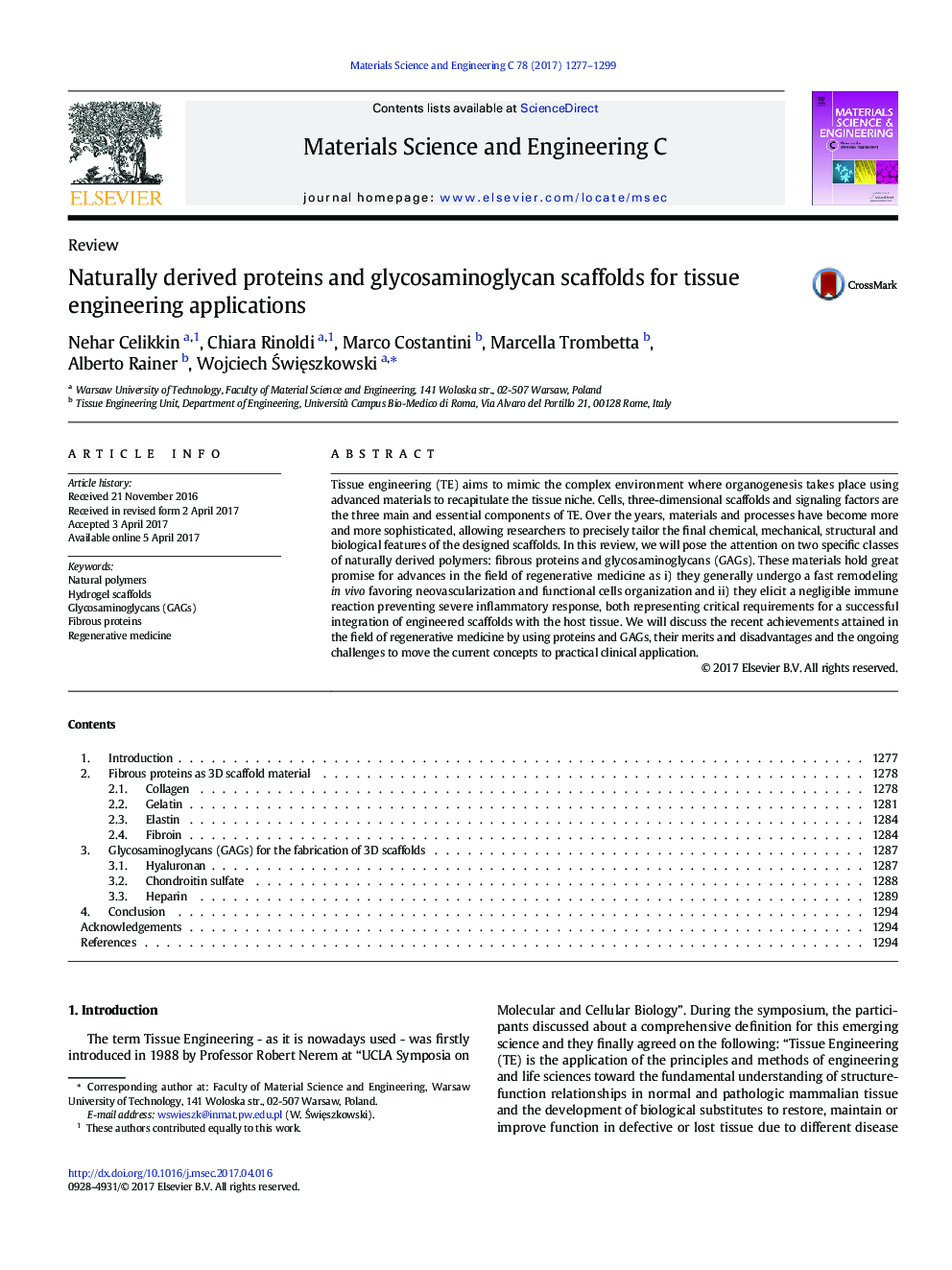| Article ID | Journal | Published Year | Pages | File Type |
|---|---|---|---|---|
| 5434383 | Materials Science and Engineering: C | 2017 | 23 Pages |
â¢The most significant proteins and GAGs for tissue engineering and regenerative medicine are reviewed.â¢Technological advances enable enhanced design of natural biopolymeric scaffolds.â¢Scaffolds based on fibrous proteins and GAGs promote functional cell organization and differentiation both in vitro and in vivo.â¢The use of bioactive molecules and nanoparticles in combination with fibrous proteins and GAGs is discussed.
Tissue engineering (TE) aims to mimic the complex environment where organogenesis takes place using advanced materials to recapitulate the tissue niche. Cells, three-dimensional scaffolds and signaling factors are the three main and essential components of TE. Over the years, materials and processes have become more and more sophisticated, allowing researchers to precisely tailor the final chemical, mechanical, structural and biological features of the designed scaffolds. In this review, we will pose the attention on two specific classes of naturally derived polymers: fibrous proteins and glycosaminoglycans (GAGs). These materials hold great promise for advances in the field of regenerative medicine as i) they generally undergo a fast remodeling in vivo favoring neovascularization and functional cells organization and ii) they elicit a negligible immune reaction preventing severe inflammatory response, both representing critical requirements for a successful integration of engineered scaffolds with the host tissue. We will discuss the recent achievements attained in the field of regenerative medicine by using proteins and GAGs, their merits and disadvantages and the ongoing challenges to move the current concepts to practical clinical application.
